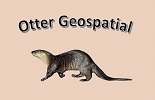When people look at the various GPS technologies, they are tempted to ask “Which is the most accurate?” That’s the wrong question. Here’s a way to rephrase it. “Which technology produces the accuracy needed for the project at hand and can achieve that accuracy under the conditions that will be encountered?” Users generally find the following list of pros and cons helps the decision.
- Pro – Whether in the open or in moderate tree cover, accuracy is sufficient for natural resources mapping work.
- Pro – Initial cost is reasonable ($300-$400).
- Pro – Moving files to and from a receiver is simple and straightforward using free software (we use Garmin BaseCamp)
- Pro – The effort involved in training up newbies is modest.
- Pro – WAAS differential correction technology is available to tighten up accuracy when working in the open.
- Con – Recreation grade technology is less accurate than mapping/submeter in open conditions.
- Con – Recreation grade GPS is unsuitable for mapping linear features. Walking routes (called tracks) are recorded, but the accuracy of the position fixes that define the tracks (called trackpoints) is insuffient for mapping work.
- Con – The function that allows waypoint specific notes to be typed into the receiver is pretty useless.
- Con – Multiple steps are needed to add downloaded waypoints to the ArcGIS data frame

Comments are closed.